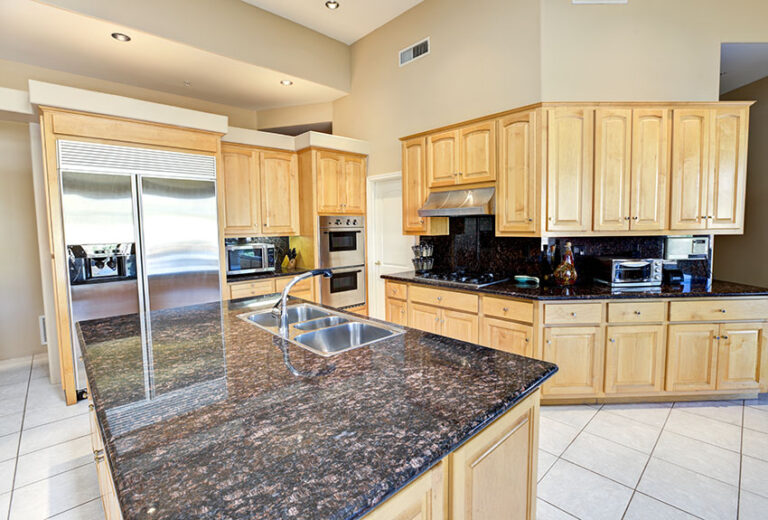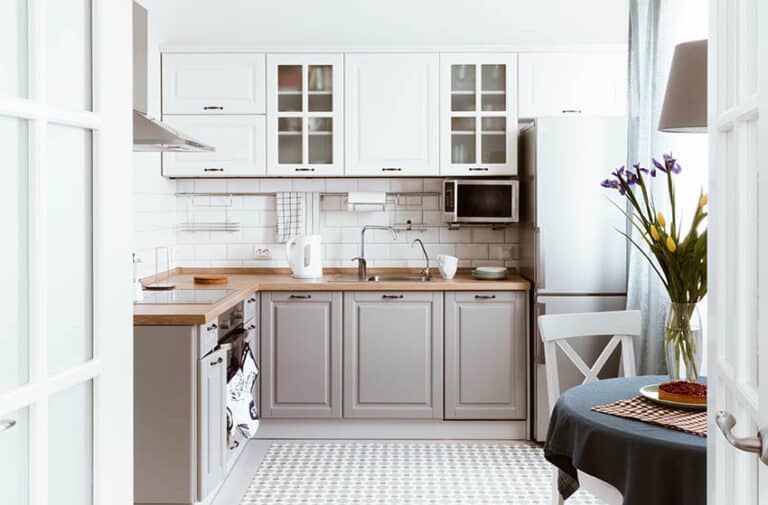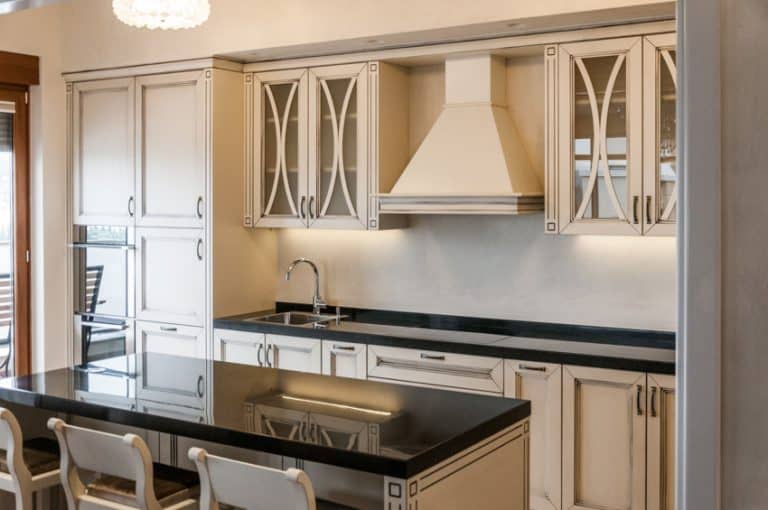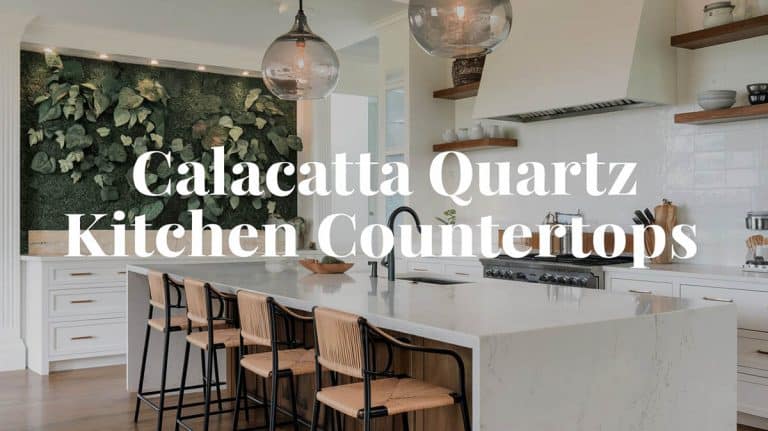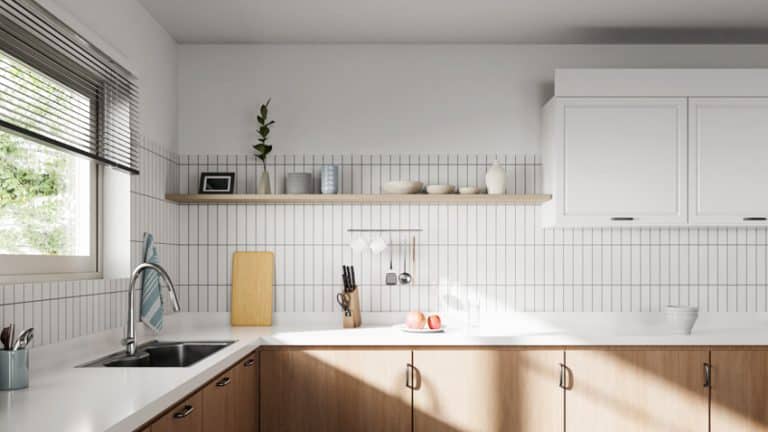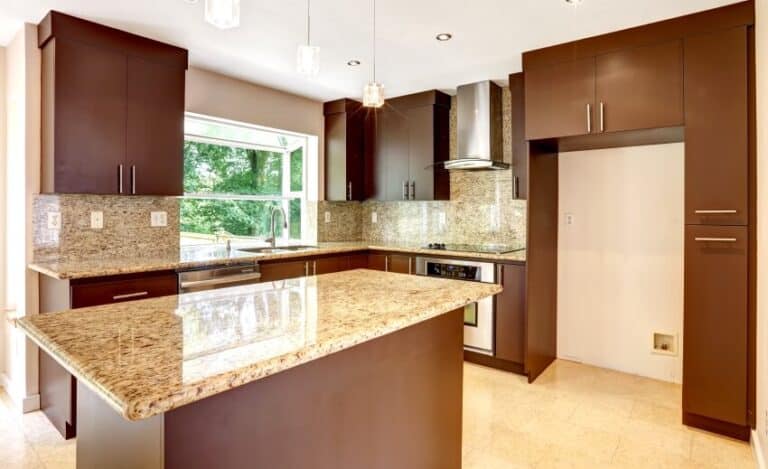Labradorite Countertop (Colors & Designs)
In this labradorite countertop design guide, we share what it is, common colors, distinct countertop features, cost, and how to care for these stone counter surfaces.
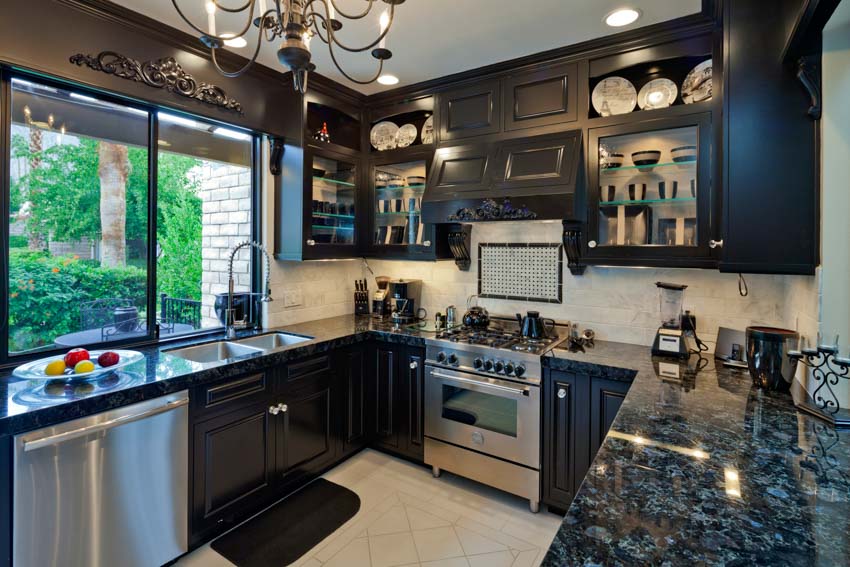
When it comes to countertops, the most popular materials are marble, granite, and tiles. But there’s an alternative material that is slowly gaining popularity, like labradorite.
Aside from countertops, it is also used as a sink material, backsplash, and tile. This article explores this beautiful stone material and whether it is a good choice for your next countertop project.
What Is A Labradorite Countertop
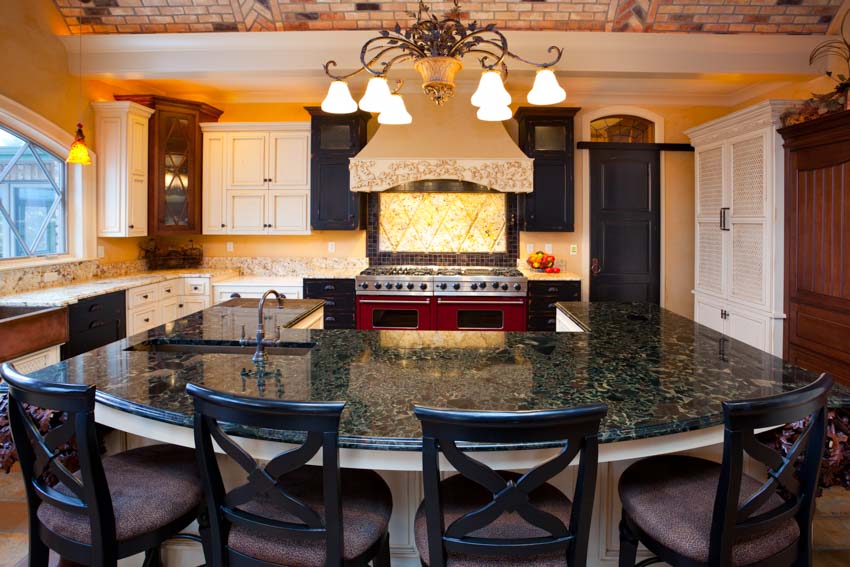
It got its name from the place where it was originally discovered — Labrador, Canada, located around the region of Newfoundland. It is also commonly found in, as you might guess, Madagascar, Ukraine, Finland, and some parts of Australia. The color reveals its place of origin.
One of its standout features is its iridescent display of colors called labradorescence. It also has a glassy, pearl-like luster on the cleavage faces.
When it comes to durability, labradorite types of kitchen countertops are quite strong. It has a Mohs hardness between 6 and 6.5. With proper care and maintenance, it can last many years.
If you are considering this stone for your countertop, find one with as limited variation as possible.
What Color Is Labradorite
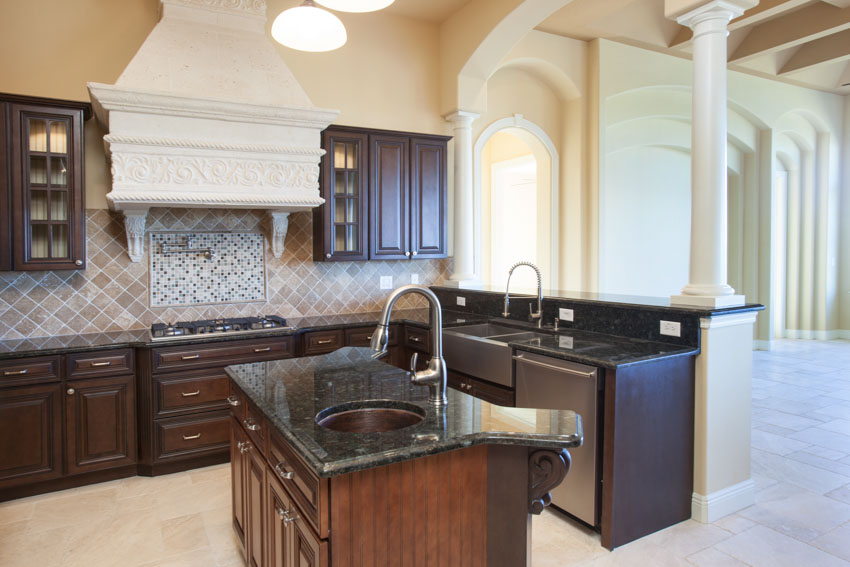
The primary solid color of labradorite ranges between medium and dark gray or aqua to yellow. However, you might see other colors present on the gemstone.
These are not actual colors, but rather, they are ladorescence or light play within the stone. It is produced when light hits its surface and passes through the layers, which diffuse, reflect, and refract the white light.
The most common labradorscence seen is blue, dark blue, blue black, light to dark aqua, copper, yellow, orange, purple, and fuschia. But the rarest colors are fuschia, purple, pink-copper, and light blue. See more granite colors for countertops here.
Labradorite Slabs for Countertops
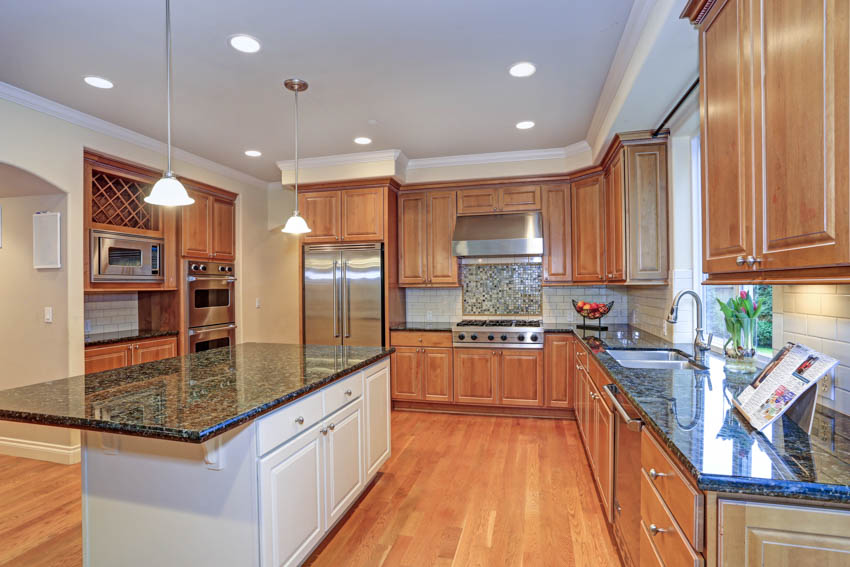
Labradorite countertop slabs can vary in thickness depending on where they would be used. The usual slabs can have a thickness between 18mm and 30mm. For kitchen countertops, the usual size is around 108” X 36”.
These slabs have three distinct features — uniqueness, surface finishes, and usage.
Unique: The stone material is unlike any other type of countertop slabs. When light illuminates its blue labradorescent areas, its textures and features are strongly highlighted. You’ll notice the brightness and shine of the blue dazzle.
Surface Finishes: Their surfaces can be processed to have different finishes. They can have a honed, polished, brushed, or antique surface.
But the polished one is the most popular among interior designers because of its smoothness. Polished slabs are also sealed so that you can utilize their unique features differently.
Usage: Slabs are suitable for both commercial and residential projects. They are often used as countertop panels, pavings, tiles, etc.
Labradorite Cost
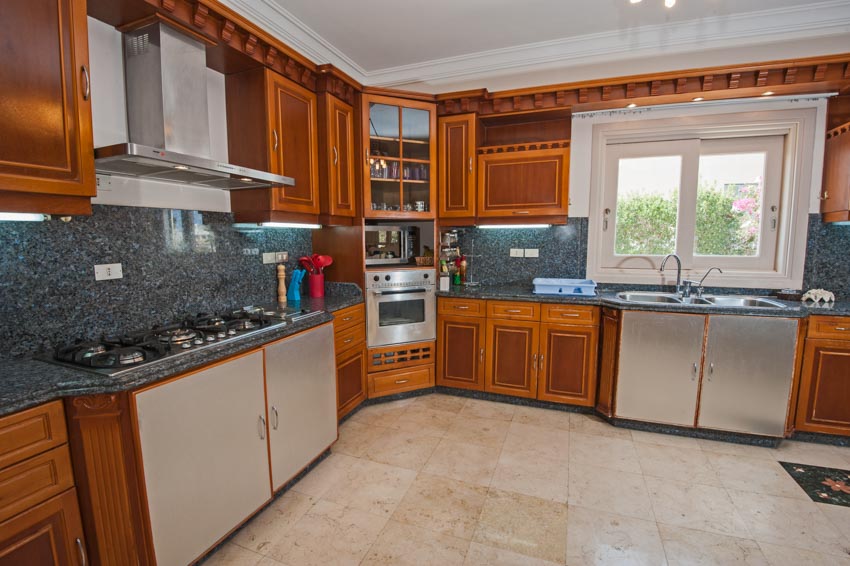
Labradorite is a newcomer in the market, and only a few people have noticed it as an alternative. Therefore, it’s quite difficult to find the average price rate.
Sellers and manufacturers have given different price quotes for the material. For example, one manufacturer said the expenses might vary between $55 and $170 per square foot for the materials alone.
If you factor in the installation process, the average cost would be $200 per square foot. Another vendor quoted it at $295/square foot, installation included. Meanwhile, another seller said its price range is between $22 and @40/square foot.
It is highly recommended to do thorough research about the vendor or manufacturer so you can get a good deal. Also, keep in mind that a cheaper alternative chip easier than granite.
Does Labradorite Make A Good Countertop?
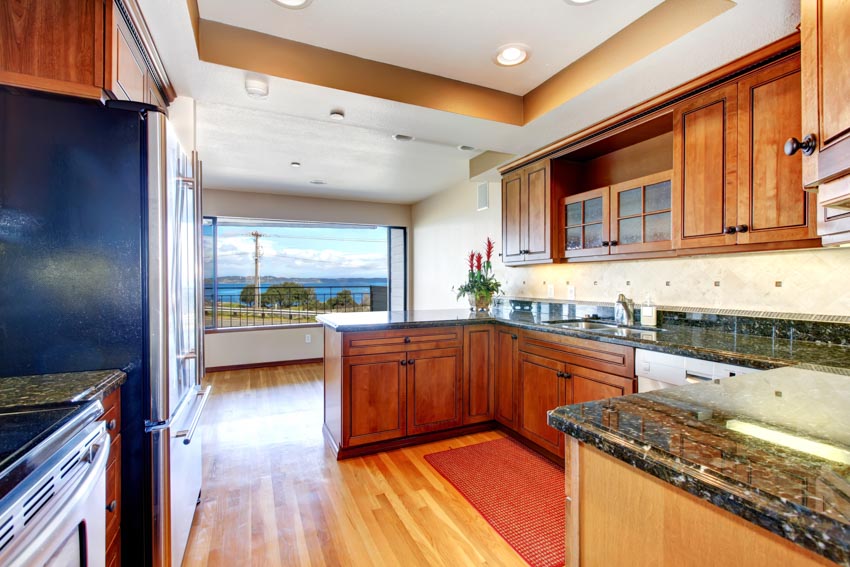
If you are one of the few people who have seen the exotic beauty of a labradorite, you might want it in your house.
Its unique appearance can become a statement piece wherever you place it in your house. But what about as a countertop? Is it worth it?
Here are three reasons why it is or isn’t a good choice for you:
Durability: As mentioned above, labradorite has a Mohs hardness rating between 6 and 6.5.
That means you can directly use it as a chopping board and not worry about scratching or chipping it. It is also non-porous, so it highly resists stains and is easier to clean.
Cost: Labradorite is not as common as granite. It can only be found in certain countries. Because it is not readily available, plus its unique features and characteristics make it a luxury material, the stone slabs are expensive.
Installation: Since it’s considered a luxury material, installation requires professional expertise.
Furthermore, the slabs are quite heavy, and an ordinary wood might buckle under its weight. If you combine it with wood, choose a sturdy wood material.
Is Labradorite A Granite?
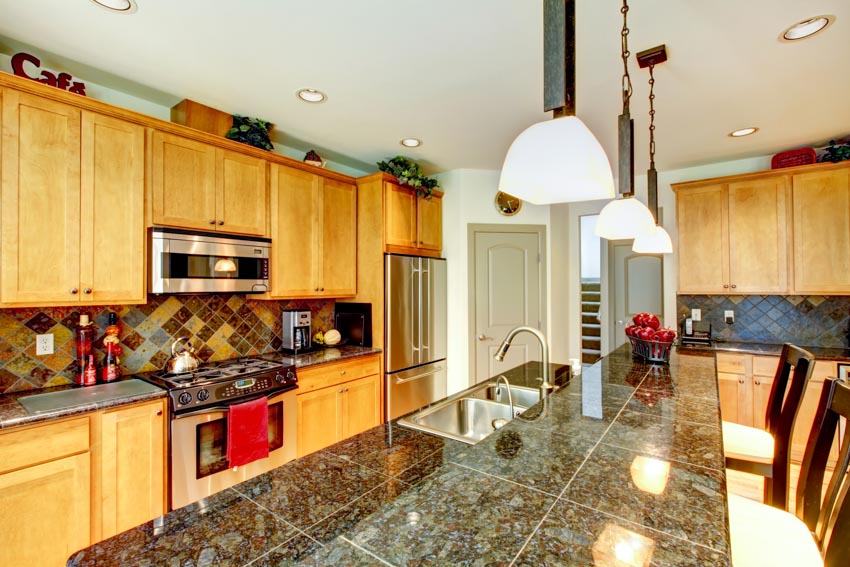
Labradorite might look like quartzite because of its crystal structure, but it is a type of granite. Here’s a link to our comparison of quartzite vs granite.
Does Labradorite Scratch Easily?
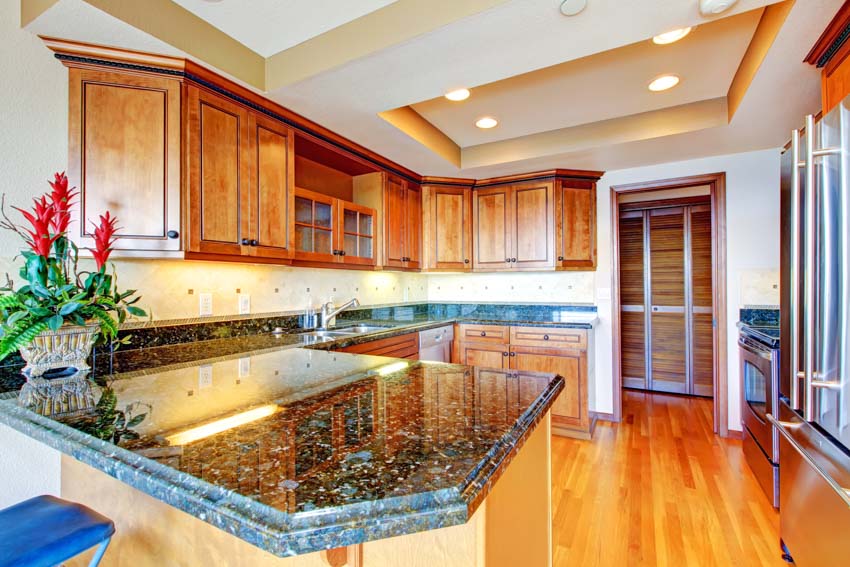
Labradorite is a soft gemstone and can be scratched quite easily, but it is not brittle. It is tough and durable compared to other soft gemstone countertops. It’s highly recommended to put a protective coating on it.
Labradorite Care for Countertops
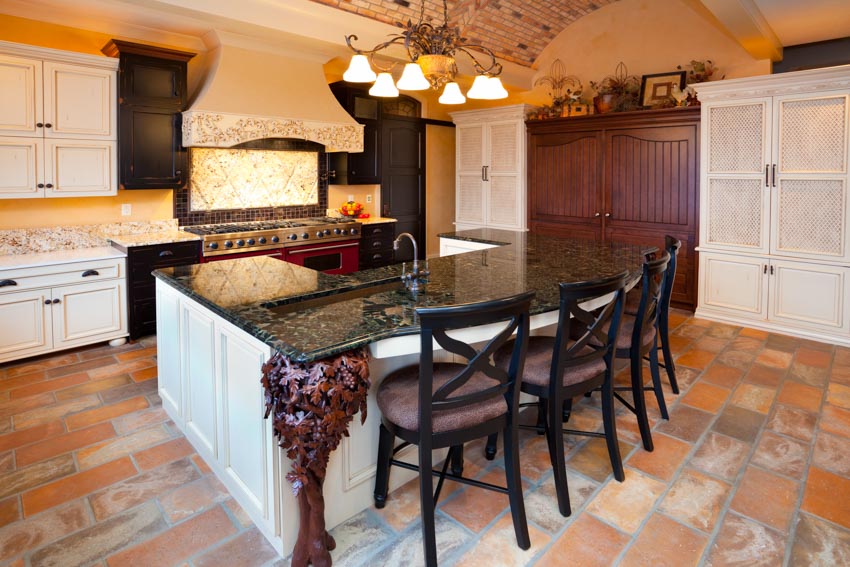
Labradorite is a type of granite; thus, maintenance and care should be similar to how you care for granite countertops.
No harsh cleaners: The stone is non-porous, giving it an easier-to-clean surface material. A simple mixture of water and dishwashing liquid will do the job.
Mix a teaspoon of the dishwashing soap with four cups of water. Spray on the countertop surface and wipe with a clean microfiber cloth.
Never use cleansers with a high acid level, vinegar, and lemon because they could dull the glossy finish of the surface.
For heavy stains: Although labradorite is stain-resistant, red wine or beet juice can stain the surface a little. Easily remove the stain using a commercial stone poultice.
If you can’t find one, create a homemade cleaning mixture using hydrogen peroxide and baking soda. Mix just enough to create a thick paste with the consistency of peanut butter.
Spread a ¼-inch thick paste over the stain and cover with saran wrap. Let the mixture remain for 24 hours. After that, remove the plastic cover and let it dry completely before wiping it away. Repeat the process until the stain is gone.
Protect from heat: Although the stone surface is pretty durable, you still need to protect it from excessive heat, which might crack the countertop. Instead of placing hot pans or dishes on the countertop, use trivets so the air can flow freely under the hot item.
Wipe spills immediately: Like most granites, labradorite is sensitive to acid and excessive color. Immediately wipe spills, especially wine, vinegar, lemon, citrus juices, beets, and more.
Also, be careful of using harsh chemicals, such as ammonia and chlorine.
Don’t sit on it: You might not see it, but many granite countertops have hairline cracks. If exposed to excessive weight, it might further crack the countertop.
Reseal it: Even if your labradorite countertop has been sealed, you still need to reseal it after a few years to maintain its glossy finish. If your surface has a darker color, reseal it after every 5 years if it’s lighter, after three years.
Labradorite is an exotic and luxurious stone that has gained popularity because of its beauty.
Unlike other types of granite, it costs a bit more because its availability is limited in some areas. But it is as durable as other popular countertop materials available in the market.
See more related content in our article about how to granite kitchen countertops, pros and cons on this page.

